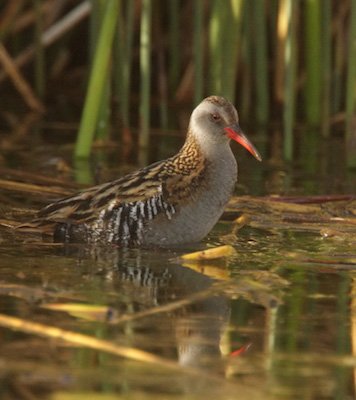Santa Cruz

Birding Santa Cruz
Santa Cruz is a province of Argentina, located in the southern part of the country, in Patagonia. It borders Chubut province to the north, and Chile to the west and south. To the east is the Atlantic Ocean. It is the second largest province of the country (after Buenos Aires province), and the least densely populated in mainland Argentina.
To the west, the Andes at these latitudes are lower than in the centre and north of Argentina, but still have year-round snow. An immense ice sheet feeds the numerous glaciers. From the centre to the Atlantic coast in the east, plateaux of descending height dominate the landscape. The Atlantic coastline is a mixture of beaches and cliffs. In Gran Bajo de San Julián, the Laguna del Carbón is 105 meters below sea level, and is the lowest point in the Western and Southern Hemispheres.The average temperatures are 13°C in summer, and 3° in winter, when temperatures can fall to -25°. Even though precipitation on the ice-sheet area in the west is common, rain is scarce in other areas, with an average of 200 mm per year. Strong winds blow all year round.The cold, arid steppe is crossed by rivers that produce fertile valleys; Deseado River, Santa Cruz River, Gallegos River, Coyle River, Chico River and Pinturas River.The lakes of Buenos Aires Lake (2,240 km², 881 km² in Argentina), Cardiel Lake (460 km²), Viedma Lake (1082 km²), Argentino Lake (1560 km²), Pueyrredón Lake, Belgrano Lake and San Martín Lake (1.013 km²) are all in the west of the province. These lakes are fed by glacieal melt-water, but due to the cold climate their shores are not used for agriculture.
Santa Cruz, with a small poulation and rich in natural resources, has long had one of Argentina’s most prosperous economies. Its economy, with the possible exception of Neuquen’s , is the country’s least diversified, however. Fully half its output is accounted for by the extractive sector (petroleum, gas and mining), with an annual production of 4.5 million m3 of petroleum and 3 million m3 of gas, mainly in the Pico Truncado, Cañadón seco and Cerro Redondo extracting facilities. The coal production at Río Turbio, Argentina’s only active coal mine, is of around one million m3 per year. Mining includes gold (Cerro Vanguardia), clay, gypsum, salt and others. The second most important productive activity is that associated with sheep. With 7 million heads, Santa Cruz is the second main producer of wool and meat after the Province of Chubut, most of which is designated for export.
Sea fishing, and its later industrialization at the fishing ports of Puerto Deseado, Puerto San Julián, Puerto Santa Cruz and Río Gallegos produces prawn, squid, hake and dozens of others. Most of the production is frozen and exported.There is little agriculture due to the arid nature of the soil. There is a small timber industry fed by both forests and planted trees, of which the wood of the lenga is the most exploited.
-
Wikipedia
GNU Free Documentation License
Information
-
Number of bird species: 260
(As at May 2019)
-
Monumento Natural Bosque Petrificad
InformationSatellite ViewPetrified Forest National Monument (1954) covers nearly 14 square miles (35 square km). -
NP Parque Nacional Los Glaciares
WebpageSatellite ViewNational Park's Fauna has species from sub anctartic woods and the steppe. Condor, Aguila mora, choique, guanaco, puma Felis concolor are representative from this area… -
NP Parque Nacional Perito Francisco Pascacio Moreno
InformationSatellite ViewOne hundred and fifteen species of bird have been recorded in the park, including peregrine falcon, hooded grebe, flamingo, andean goose, Podiceps, and several species of ducks, falcons and eagles…
-
Patagonia WildWatching
Tour OperatorMy name is Cristofer De la Rivera, I’m Chilean and I live with my wife and our two children in Punta Arenas, Chile; the capital of Chilean Patagonia situated on the shore of the Strait of Magellan. I’m a Veterinarian by education and have worked as a Professional Guide and Tour Leader for over 7 years in Patagonia and Chile, running trips focused on Nature, Birdwatching, Kayak and Whalewatching in the Strait of Magellan and Puma sighting in Torres del Paine. -
Trogon Tours
Tour OperatorTrogon Tours is the official nature travel company of Birding Argentina, the leading birding and nature specialists for southern South America since 2001
-
Guillermo Rost - Aves del Golfo San Jorge
BLOGI am Guillermo Rost Observer of birds of the locality of Comodoro Rivadavia and photographer of birds like hobbie. I am currently studying a degree in Biological Sciences in the UNPSJB of Comodoro Rivadavia and I am actively participating in three projects: Bird Guide of the Astra District, Protection of the Gaviotinera of Caleta Olivia and Birds of the Patagonian steppe. Identification and determination in relation to landscape units in the San Jorge Gulf Phytogeographic District.
